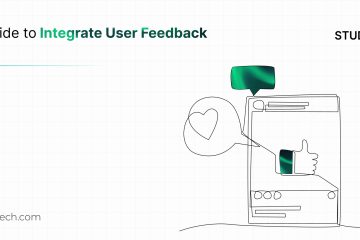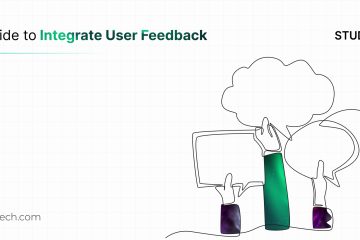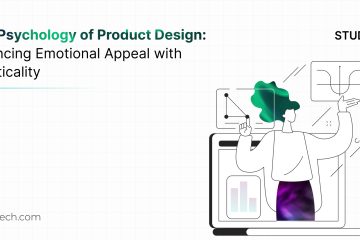Steve Jobs once said, “You‘ve got to start with the customer experience and work back toward the technology – not the other way around.” Customer experience and empathy form the core of a well-designed UX, and it goes without saying that figuring out a user-friendly application is more important than zeroing in on the technology. By starting to solve the problems of your users and addressing potential t challenges upfront is synonymous with the popular saying – A job well begun is half done. The importance of keeping users and their feelings on the pedestal is critical for the success of the design process. An early focus on developing a user-centric design will pave the way toward building what users need.
What is a user-centric design?
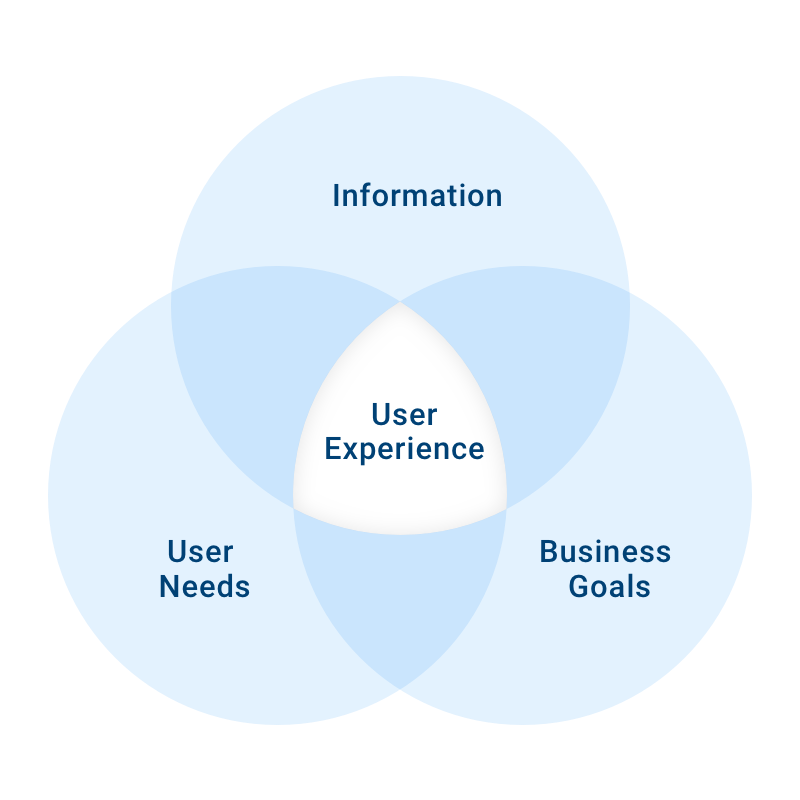
image source: Google
Being an iterative design approach, the user-centric design or UCD is a process where the UX designers concentrate on fulfilling the requirements of users at each step along the design process. This involves design teams including users throughout the design process with the help of a range of research and design strategies to develop highly usable products that are accessible to them.
UCD process: What does it consist of?
To develop a deep understanding of user requirements, UX designers must use a combination of two techniques – investigative methods along with generative ones. While the investigative methods comprise the conducting of surveys and interviews, the generative ones such as brainstorming allow acquiring a good understanding of user needs. Basically, each iteration of the UCD process consists of four different phases:
- Understanding the context of the use
- Defining the user requirements
- Developing design solutions
- Evaluating as per the requirements
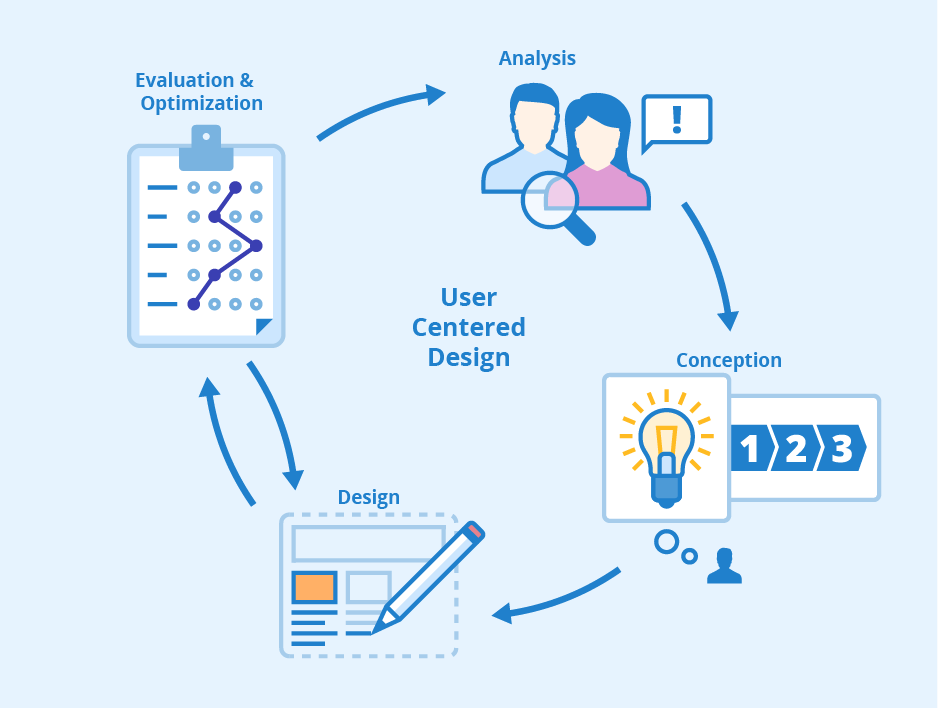 Image source: Google
Image source: Google
The first step involves the designers working as a team to understand the viewpoint and context of user requirements. This also includes sketching user flows, building a conceptual model, and getting users’ feedback. Once this process is complete, the designers identify and define the requirements of the users, followed by a design phase where the UX design team develops feasible design solutions such as building Lo-Fi prototypes. This step is followed by an evaluation phase when the outcomes of the evaluation are assessed by hybrid focus groups as per the users’ context and requirements. This will give a clear idea of how well a design will perform. In other words, it will also help the designers understand if they are able to satisfy the users’ needs. This process continues in the form of further iterations of these four phases until the final evaluation results are satisfactory.
That being said, it is also essential to note that user testing should be mandatory in the early stages of development. Testing methods such as hybrid focus groups or field testing can help in identifying problems and ensuring that they have been resolved. Testing procedures can be repeated as many times the designers wish to because nothing is more important than making sure your users are completely satisfied with the UX design of the application.
Hybrid focus groups
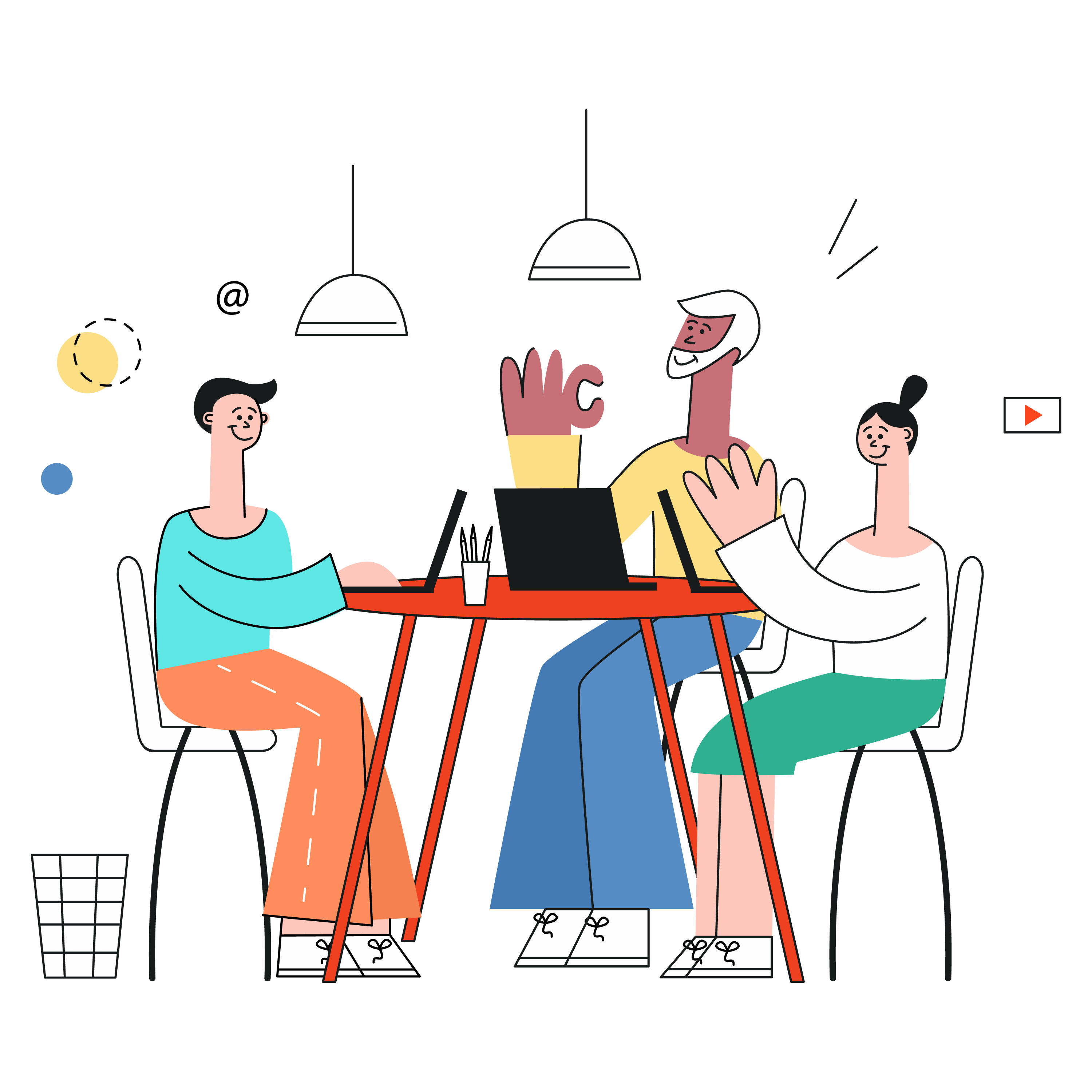 Image Source: Google
Image Source: Google
A hybrid focus group focuses on co-creating and asking a set of questions. It involves gathering almost 6-8 participants to organize a discussion and allow people to evaluate individually. The discussion concentrates on finding any issues as a group and learning each other’s deliverables to come to a unanimous conclusion. The final results are discussed with the client or stakeholders. To put in simple words, hybrid focus groups help in understanding the feelings and needs of users both before interface designing and post-implementation.
Field usability testing
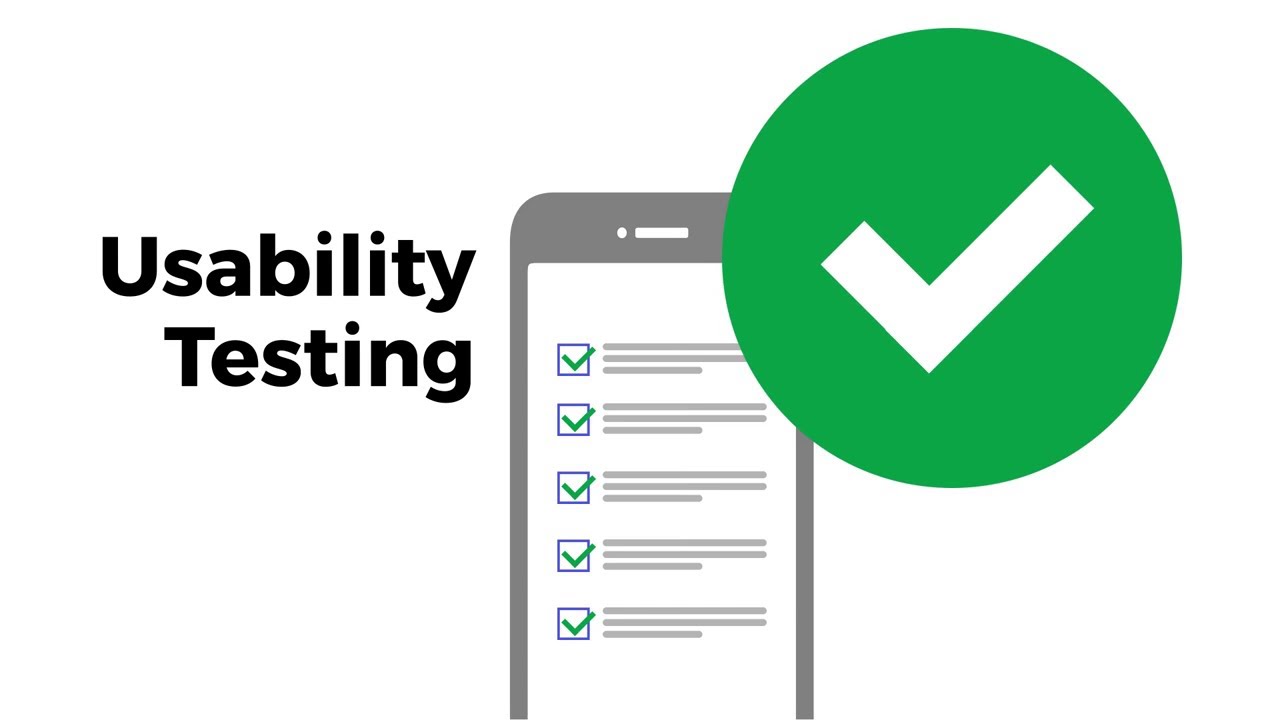
Image Source: Google
On the other hand, the field usability testing method combines traditional testing techniques with field research to test an application in the actual context in which it’s used. Participants use a product in their own environments; so this type of testing focuses more on observing the contexts of other users. To identify almost 80% of the design problems, a target audience of 5 participants should be enough. All one has to do is observe and make note of the pain points of the users while using the application and see if they get stuck anywhere. This will help in recognizing the issues, resolving them, and finalizing the UX design.
How to involve users through a UCD?
Before jumping into the UCD process, it is crucial to understand what your users want to do with a product and how they wish to utilize it. Designers can accordingly decide on what they can do to help, and how they can work together to achieve the goals of their users. Involving users is an ongoing process in UCD and designers should keep that in mind throughout the design process. Some golden rules they must follow to keep users in the loop are listed below:
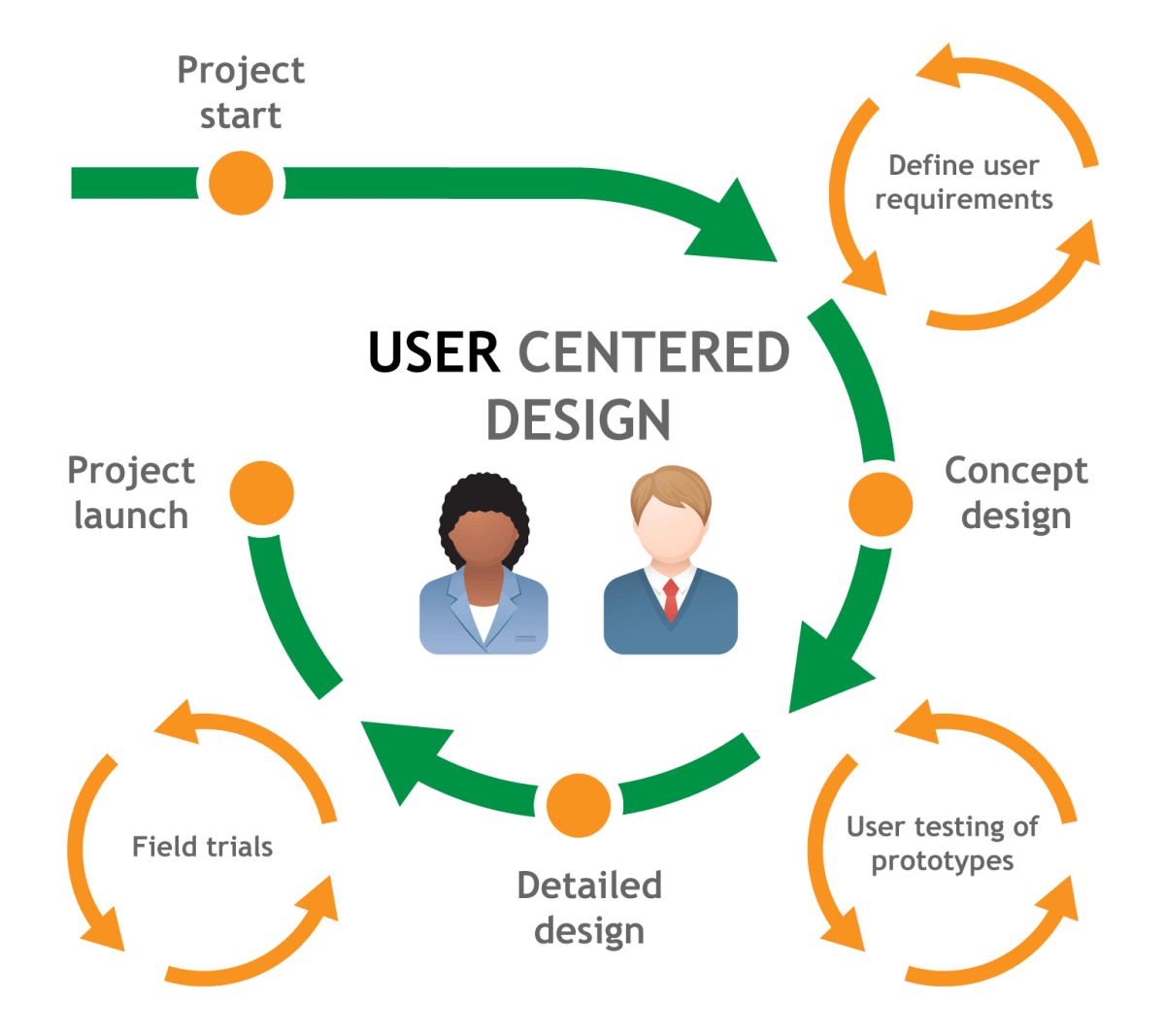 Image Source: Google
Image Source: Google
- Identify and understand your audience. A UCD relies on the participation of users throughout the design process. This will eventually lead to a solution that will be useful and enjoyable for users. However, it is imperative to understand the requirements of your target audience thoroughly.
- Research if you want to know more. Make it a point to perform research regularly. Be it drawing sketches or making drafts of the concepts of your app’s design, be very clear about what you need to know from your users.
Learn from experiences. Be scrupulous and learn from the experiences of your users without forcing them to suggest any out-of-the-box solutions. - Collaborate because it is key to successful UX design. After you observe the areas of concern that your users have to deal with, work with them, and co-create the best possible design solution. Ensure that you do this without confusing them.
- Have a keen eye for detail. Being open-minded to seeing the whole picture and understanding from everyone’s perspective is essential.
Does a UCD pay off?
By working with users at close quarters, it is evident that the final product will more likely meet most of the expectations and requirements of the users. This means that you won’t have to spend a lot on customer services and a satisfied customer will help in increasing the sales through word of mouth. In a nutshell, UCD leads to more reliable products. Besides, having UX designers close to users builds a sense of connection that is vital to create the best designs focussed on improving the quality of experience. To answer the question, a UCD definitely pays off! Not to mention that it promotes faster user acceptance and steers your business in the right direction, promoting sustainability.
